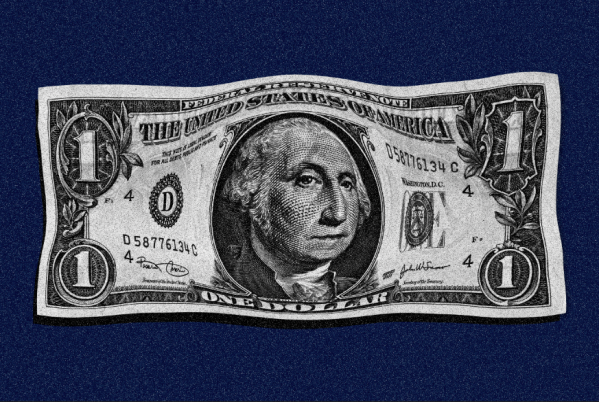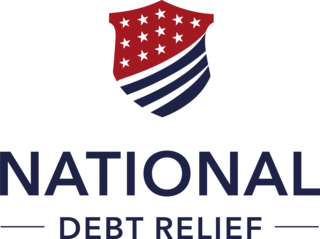How Bad Is Inflation Under Biden, Really? A Global and Historical Analysis

The U.S. is finally starting to emerge from one of the worst bouts of inflation since World War II.
From a big-picture perspective, the country has recovered quickly from pandemic-era price shocks, especially when compared to similar nations — and to America's own history dealing with high inflation.
“The way we [economists] look at inflation or price growth is the rate of change, whether it's at a month's pace or over the course of a year,” says Matt Colyar, an economist at Moody’s Analytics. “And that has moderated significantly.”
On a personal level, though, many Americans are still feeling the sting of growing prices even as the economy is doing well overall and moving toward the Federal Reserve’s preferred rate of 2% inflation. For the third year in a row, Americans told Gallup that the increasing costs of living are the worst financial problem facing the country. And many worry that inflation will only get worse after the 2024 election.
To get a better understanding of where prices are, where they have been, and where they’re going, Money analyzed historic inflation data and spoke to economists who study the topic. They sounded a hopeful note — but underscored that we’re not out of the woods just yet.
How bad is inflation, really?
The latest government data show prices rose 3% for the year ending in June. That’s according to the most popular inflation reading, which is published by the Department of Labor.
At inflation’s peak in June 2022, that reading came in hot at 9.1%, a level unseen since the 1980s.
So it’s clear that inflation rates are trending downward. But the Federal Reserve, the U.S.’s central banking system tasked with reining in prices, would like to see more progress before declaring victory.
Ideally, the Fed wants inflation to stay around 2%, but it prefers using a separate measure of price growth published by the Department of Commerce. According to this separate inflation reading, prices rose 2.6% in May (and 6.8% in June 2022).
Historically, the Commerce Department’s inflation gauge, known as the personal consumption expenditure index or PCE, stays lower than the Labor Department’s metric. Because of this trend, the PCE is likely to hit the Fed’s target of 2% first.
Economists say being within striking distance of that target after only two years since inflation peaked is an incredible feat, especially compared to the last time inflation flared up in the ‘70s and ‘80s.
But everyday Americans aren’t in such a celebratory mood.
“For consumers, 2%, 3%, 4% don’t really mean anything,” says Sofia Baig, an economist at Morning Consult. “What they've experienced is actually around like a 20% increase in prices since the pandemic, which is kind of shocking.”
In other words, everyday Americans aren’t as focused as economists on the month-by-month or even year-over-year inflation numbers. For them, the time frames of official inflation measures are arbitrary. In fact, the way 61% of Americans define inflation is as an increase in prices over two or more years according to a Morning Consult survey.
Instead, what they’re feeling is the cumulative effect of recent inflation. And since the pandemic began, to Baig’s point, Labor Department data shows that the cost of living has skyrocketed nearly 22%.
Rent and mortgage payments are through the roof. Grocery prices continue to creep higher. Insurance premiums, especially for home and auto, are breaking records. All that is stifling many Americans’ budgets.
A clear example of this mindset is playing out all over social media feeds as people are posting their pre-pandemic grocery receipts and comparing the price to today.
“I decided to re-order my first Instacart order from 2019,” said Crisman White, who goes by DadHat on TikTok, in a viral video. “$35 for 12 items.” Then White ordered 12 similar items again in June.
“In total, it was $62.64,” he said, an increase of over 78%. “Yeah, we all be struggling out here.”
But to truly understand just how bad today’s inflation is (or isn’t), it’s important to reference previous periods when inflation reared its head and to compare inflation in the U.S. to similar countries.
Inflation in U.S. history
For most Americans, pandemic-era inflation is their first experience with soaring prices. But as Coylar with Moody’s explains, a “huge segment of American households” lived through the last time inflation soared.
For folks at or near retirement age, this isn’t their first rodeo. They likely remember the runaway prices of the ‘70s and ‘80s well — in addition to the multiple recessions it took to finally get inflation under control.
In 1969, inflation topped 5% for the first time since World War II. It took about 13 years to get prices back under control, with annual inflation reaching its zenith of 13.5% in 1980.
Baig notes it's important to understand that this wasn’t “just one blip of high inflation.” Prices spiked in the mid ‘70s, then moderated somewhat. Then they spiked again at the end of the decade.
Colyar says this ebb and flow is largely the result of “poor central bank policy.” In short, the Fed lowered interest rates too soon, and inflation came back with a vengeance. In a notorious move to tame inflation once and for all, then-Fed Chairman Paul Volcker jacked interest rates up to 20% starting in 1980 and sent the economy into a deep recession.
“That’s something that is coloring the way the Fed is acting today,” Baig says, noting the last thing the present-day Federal Reserve wants to do is repeat the same mistake by lowering interest rates too soon — no matter how much investors and consumers may want them to come down.
On the other hand, Baig says some prominent economists worry the Fed is too afraid of repeating the same mistake and could leave rates too high for too long.
“It’s an open debate,” she says.
Inflation around the world
Pandemic-era inflation didn’t just affect the U.S. Countries all over the world were thrown into economic turmoil due to lock-down measures, supply-chain shocks and ensuing price increases.
While inflation peaked at 9.1% in June 2022 for the U.S., across the pond in Europe, it kept marching higher for several months, ultimately reaching 11.5% in October 2022, according to figures from the European Union (EU).
Today, inflation has fallen back down to around 3% for the EU, though a few countries like Croatia, Estonia and Austria are still dealing with rates above 4%. This pales in comparison to some developing nations, like Argentina and Venezuela, which have been battling hyperinflation long before the pandemic. For example, in May, the annual inflation rate in Argentina was 276.4%. That's not a typo.
“In general, the U.S. has done really well,” Colyar says.
That’s in large part due to the U.S.’s relative energy independence. Part of why inflation took off in North America and Europe around the same time in 2022 was due to Russia’s invasion of Ukraine. Because Russia is a major oil producer for much of the world, the war caused oil prices to soar.
However, the U.S. was able to rely on its own oil reserves and prices came back down quicker here than in the EU.
The story is much the same for our neighbor to the North, as Canada has weathered the price shocks better than its European counterparts. Inflation trends in Canada largely mirror those of the U.S., but they’re not identical.
In fact, inflation there has been slightly lower. For Canada, price growth peaked in June 2022 just like in the U.S., but at 8.1%. And according to the latest reading, which is for the month of May, inflation there is down to 2.9%.
Where is inflation going?
In a healthy economy, prices have nowhere to go but up.
That could be a difficult pill to swallow for many Americans, who — according to Morning Consult data — want prices to fall back down to where they were in 2019.
Indeed, some stores have recently pounced on this sentiment and have been promoting major price cuts. But Mickey Chadha, vice president of corporate finance at Moody’s, recently told Money that it’s more of a marketing gimmick than a serious needle-moving shift in terms of overall inflation.
“Overall, I can’t think of any retailers that are lowering all their prices yet,” he says. “Prices are not returning to pre-pandemic levels anytime soon, if ever.”
A return to 2019 prices would be deflation, or negative inflation. And economists say that is not good for the economy. Instead, the ideal scenario is for prices to continue to grow — but by only around 2%, while wages rise across the board, allowing people to afford those modest price increases.
As a broadly agreed upon target for healthy inflation, 2% is not too hot and not too cold.
This Goldilocks approach signifies “an economy where people want just a little bit more than the economy can produce at that time,” says Colyar. “So that’s a little bit more demand pressure than supply.”
And that’s how the economy grows. While 0% inflation may sound good on paper, Colyar says it could lead to an “implosion” of consumer demand, where people don’t have incentive to buy things now, and the economy stalls as a result.
“You want to see prices grow a little bit,” he says, “because that means demand is healthy.”
So when will America see this thus-far elusive 2% inflation? Most economists would say probably not this year. But Colyar says Moody’s predicts inflation will cool to a sustainable 2% by the middle of 2025.
In the meantime, be on the lookout for a Fed rate cut, which Moody's estimates should come some time later this year. That's the seal of approval that inflation is where it needs to be, coming from a central bank wary of repeating the mistakes of the '70s.
More from Money:
July Is Historically a Good Month for the Stock Market. Will That Hold True in 2024?
Homes Are Finally Selling Below List Price Again
Trump and Biden on Inflation, Taxes and Social Security: Who Told the Truth at the First Debate?





